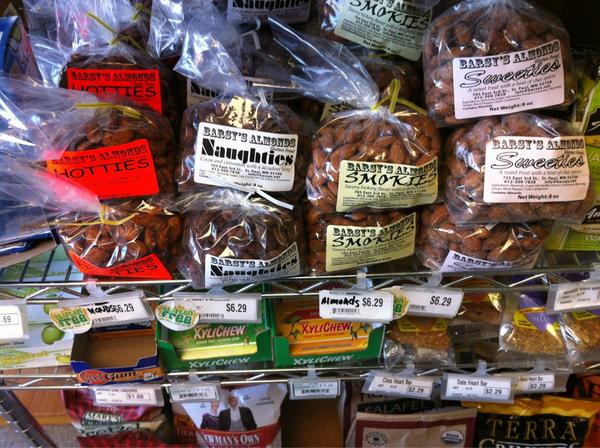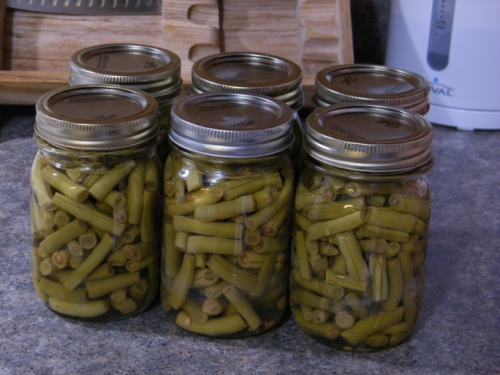Finding the time and money to eat healthy has been a problem ever since the microwave was invented. So, I’ve put together a short list of ways to make organic eating a habit. Also, there are several links of local resources where you can learn more about eating organically.
1) Buy from your local farmers market.
There are so many great deals at farmers markets. You can find local meats, cheeses, eggs, vegetables, fruits, and many other goodies in one place. The food is fresh and grown locally and you have direct access to the farmers where you can ask questions about how they grow their food. They usually start in may but the best selection becomes available as the growing season gets into full swing. Farmers markets usually last through September in this area. Plus, if you’re on EBT (SNAP/Food Stamps) many markets will accept them. The Lakes Area Growers Market in Brainerd, the Pine River Market Square in Pine River, and the Onamia Area Farmers Market are great places to get started locally.

Eating healthy is easy when you’ve got delicious food to choose from.
2) Buy into a CSA.
A CSA is a community-supported agriculture program. Every week you will get a new box of fresh produce (often delivered directly to your door!) Variety is good. You’ll get so many different fruits and veggies that you never would normally purchase. I’ve even heard of CSA programs actually providing recipes and cookbooks with their produce in an effort to give the buyer an idea of how to prepare with the different produce. This is a great way to experiment with different varieties and eat produce that you wouldn’t be as used to. There are so many ways to choose which CSA you’d like to invest in, so go to Minnesota Grown to pare down what you want and where to sign up.
3) Join a food Co-op.
From the outside, many co-ops look like any other business, since a co-op provides products and services like any other conventional business. But, it’s what goes on behind the scenes that makes it different. A co-op exists to serve its members, but what makes co-ops unique is that the members are also the owners. So, in addition to getting the products and services you need, you also have a say in the business decisions your co-op makes. There are several good local co-ops. Crow Wing County Food Co-op in Brainerd, Harmony Co-op in Bemidji, and The Good Earth Food Co-op in St. Cloud will be good places to get started.

You’ll be able to find all sorts of good stuff in your local co-ops.
4) Buy in bulk from local farmers.
What do I mean buy “in-bulk?” For grass fed beef, you can by a quarter side of beef, which equals about 1/4 of a cow. From this quarter side, you can get about 40-50 pounds of ground beef, 6-7 T-bones, 5-6 porterhouses, 10-15 roasts, ribs, soup bones if you want em, round steaks, sirloins, and lots of ribeyes. But, be sure to shop around. Prices range from $2.25-$5.00 a pound. Buying chickens locally can also save you money. If you look in grocery stores, organic chicken can cost up to $10.00 a pound, where if you buy locally through a farmer, you’ll only have to pay 1/4 of that. If you want to see where you can buy local, try going to the Minnesota Grown website.
5) Shop in Season.
Organic produce can vary significantly in price depending on when you buy it. For example, organic strawberries in the spring are relatively cheap at $3.50 a pound when compared to almost $8.00 a pound in the winter. By shopping in season, you can save a lot of money. Like I said, the local farmers markets get started in May, but the bulk of the produce becomes available as the growing season gets warmer. For instance, vegetables that are available early in the season are the leafy crops, such as kale, radishes, and lettuce. Common late season produce are gourds and apples. Plan accordingly!
6) Always Comparison Shop.
While this idea isn’t exclusive to shopping organic, it’s a great way to stretch your food budget. In my area, I can get a 3 pound bag of organic potatoes for $7.99 and just down the street about 4 miles I can get the same bag of potatoes for just $3.99, It is important to comparison shop to get the best deals.
7) Create your Meal Plan Around the most Affordable Produce, Meats, and Sale Items.
Organic does go on sale, especially when it’s in season. Some delicious meals can be made with limited ingredients at hand and you’ll be shocked at how easy it is to start that change. Let your tastebuds have an adventure and try new things.
8) Grow your own Organic Food.
I have my own little garden My wife has a little garden that produces some of my families produce. You can grow a lot of produce with just a little time and a very little space. By growing your own organic food, you can save so much money! It really is rewarding to bring in your own food to the kitchen table. Last season, I grew baby red potatoes in my front flower bed! I can’t wait to put something new in there.
9) Preserve your Food When it is Season.
Preserving your food when in season is a great way to save money, especially in the winter months. Did you know that peppers, onions, broccoli, cauliflower, and many other foods can be frozen whole, sliced, or chopped. You can also learn how to can/preserve your own food. It may take a little time up front, but it will save you a lot of money down the road. We’ve got some tips on how to start preserving your own produce.

Homemade canned green beans are as good as it gets!
10) Transition Gradually to Organic Food.
It takes time to make permanent changes in life. You are much more likely to succeed if you slowly make this transition. Start with foods that have the highest amounts of pesticide residue, like apples.